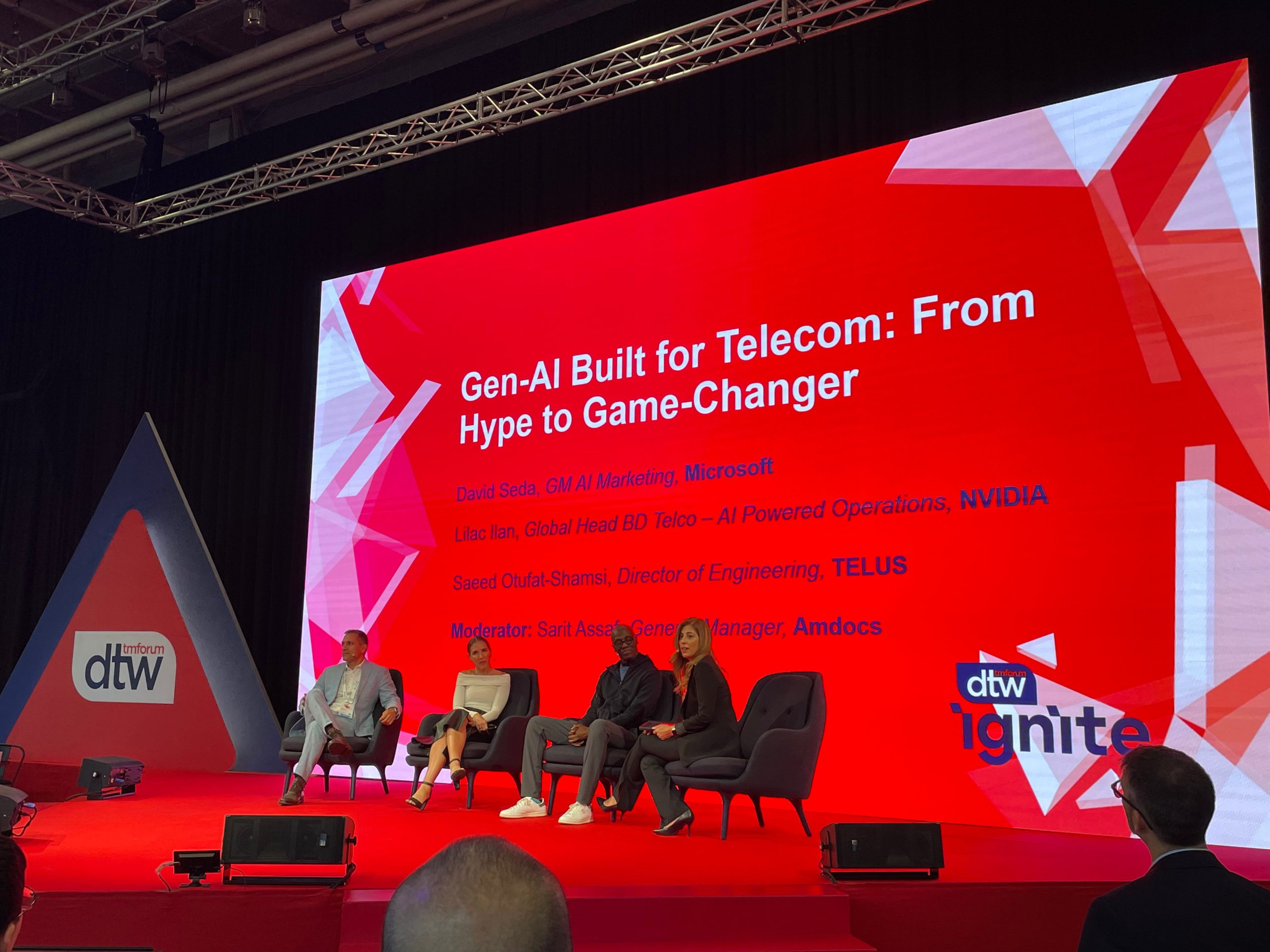DTW: IGNITE, COPENHAGEN, DENMARK – Development around artificial intelligence (AI) is moving so fast, it’s hard to predict where the industry will be three, six or even 12 months from now. But if anyone is equipped to see into the future, it’s Lilac Ilan, Nvidia’s Global Head of Business Development for Telco Operations, who laid out the biggest AI trends she sees making waves in the telco industry over the next year.
Ilan, formerly of AT&T, said she expects the conversation around AI to shift from a focus on developing many small expert AI models to developing what she dubbed as a “master model” that can connect the smaller models.
An AI ‘master model’
While co-panlist Microsoft’s GM of AI Marketing David Seda said the software giant is working on developing an API layer – due out later this year – that will allow operators and other developers to change the large language model (LLM) used by a given application without having to change the app’s code, Ilan said what she is talking about is a bit different.
It’s not just about switching between LLMs, she said. “I want you to think about the different models as experts, as your employees. You’re going to have an employee that’s good in billing, you’re going to have an expert model that’s really good at fulfillment,” she said. “The future is all about how do we connect those experts together and how bring those together to create a mast model that can disseminate the right tasks to the right employee and orchestrate them.”
Multi-modal capabilities
The second trend, she said, is that telcos will likely begin embracing the new multi-modal capabilities LLMs offer to sift through their mountains of unstructured data. She noted from her time at AT&T that operators have drone images of cell sites, photos taken during maintenance and call center notes in their data repository. The question is how to leverage that data via text to image, image to text or video inputs for LLMs.
Microsoft’s Seda also predicted telcos will lean into multi-modal capabilities, but rather than focus them on internal uses, he said they’ll look to enhance customer interactions using video and images.
Digital humans
Ilan third prediction centered around the creation of digital humans. Basically, these are customer service chatbots on steroids, hiding behind a creepy human avatar and featuring the power of an LLM behind the scenes.
Deutsche Telekom has already jumped on this bandwagon, earlier this year rolling out its very own digital human called Max. We wrote about it here. (Hint, if you have to say it’s not creepy, it is very much creepy.)
We don’t have anything against Nvidia CEO Jensen Huang’s vision for a world dominated by digital humans, but we kind of hope this use case stays on the drawing board.
AI for business
The last trend Ilan predicted is that telcos will shift from focusing on development of AI use cases that generate internal value to working on AI that can benefit their enterprise and small and medium business customers.
But if, operators only start turning their attention to external use cases sometime in the next year, that could mean they will miss the boat and lose out to hyperscalers…again.
As we noted in February, an Omdia survey from late 2023 found more than half of enterprises said they were either pilot testing generative AI (GenAI) or have already moved it into production. Another 12.8% said they’d already fully adopted the tech. Only 27.3% said they were still considering whether or not to move ahead.
At various hyperscaler events this year, we’ve heard from companies across the financial, healthcare, retail and marketing verticals that are already working with cloud companies on GenAI.
That bodes poorly for telcos who move slowly to serve customers, especially when hyperscalers like Microsoft and Google Cloud are gunning for the enterprise AI market.
Check out this link for all our coverage from the show this week.




